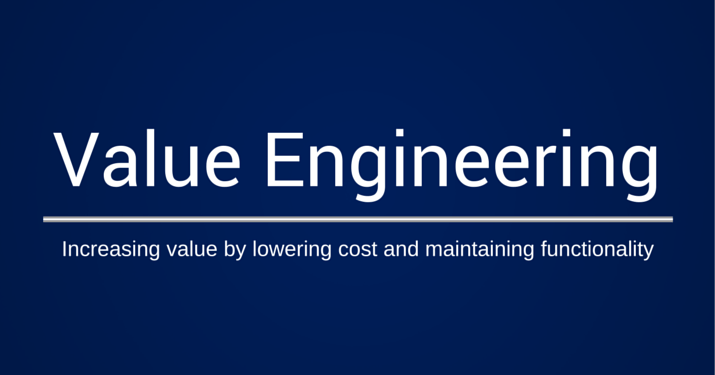Value Engineering
Last Updated May 3, 2019

Value is the ratio of function to cost. Therefore, lowering cost while maintaining function increases value. Value engineering is a focused, systematic approach used to analyze a system, service or facility to identify the best way to manage essential functions while lowering cost.
Value engineering (VE) can be pursued in a variety of ways. Most VE projects employ a team approach, and can be broken down into a number of defined phases.
Orientation
This phase identifies specific problems to address and serves to determine the scope of the project. Problems are broken down into constituent elements that represent issues to be addressed. Potential gains can be estimated for each problem solved.
Information
In this phase, data is collected and analyzed. It serves to refine the scope of the project. Priorities are finalized and targets for improvement are set, as well as methods used to evaluate progress.
Function Analysis
During this phase, a function is defined using simple two-word verb/noun combinations, for every element of the process under evaluation. Each function is then analyzed to see what improvements can be made, if it is unnecessary, if it is of primary or secondary importance, or if a new function is required. Costs are assigned to each function.
Creative
This phase explores different ways to perform the functions defined in the previous phase. It should employ methods that break down cultural, perceptual and emotional blocks that inhibit inventive thinking. This phase is not intended to result in final solutions.
Evaluation
During this phase, ideas resulting from the creative phase are grouped and ranked, and the best ones selected for further investigation.
Development
This phase includes an in-depth examination of each idea on the list that came out of the evaluation phase. Each idea is given a detailed technical analysis to determine how it can be implemented and how much it will cost. This phase identifies functions that will be targeted for improvement and helps determine the best way to proceed.
Presentation
This phase includes meetings with stakeholders and decision makers, and involves the production of reports, flowcharts, and other materials that can be used to aid the decision making process. The best idea or ideas taken from the development phase need to be described in detail, with associated costs and anticipated benefits. This type of project can be disruptive to current procedures and processes, so it is vital that all stakeholders fully understand their responsibilities and the scope of the changes. A convincing presentation that makes the benefit of the project clear to everyone involved will go a long way in minimizing resistance to change.
Implementation
This phase begins after decision makers have approved the project. The first step is to finalize the implementation plan, sometimes by making minor changes requested by stakeholders. Adequate monitoring should be provided to demonstrate and track progress until the project is complete.
While many activities that result from value engineering may seem aimed at the reduction of cost, it should be noted that the true goal of VE is to increase value. Value of a product will rise if its quality can be maintained while production cost is lowered. This can give designers the flexibility to enhance the product by adding features, for instance, without increasing cost. Ideally this would result in increased marketability and sales, which makes the process of value engineering even more desirable.
